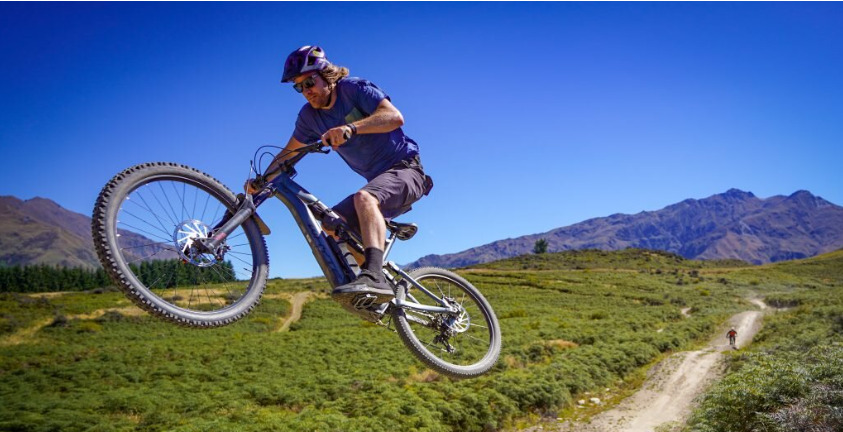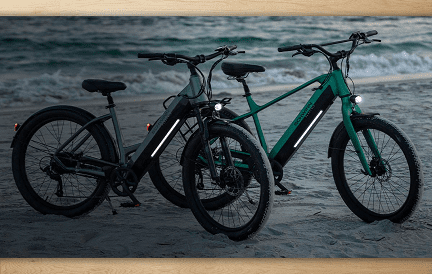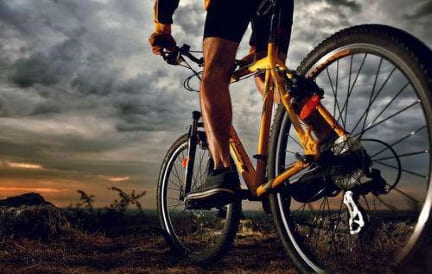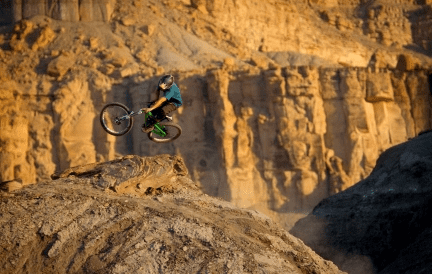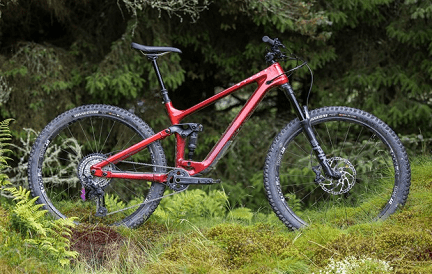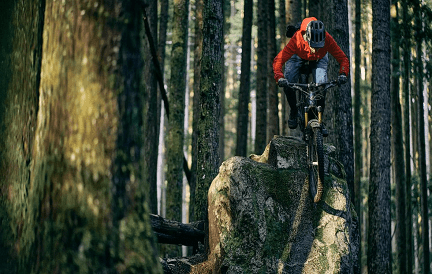MTB wheels size is of crucial importance, as it determines which style of riding the wheel is intended. It significantly defines the type of bike, whether a mountain bike, road bike, or perhaps a city bike.
- Part 1: Introduction
- Part 2: Buying Guide
- Part 3: Recommendations
- Part 4: Selection Guide
- Part 5: Frequently Asked Questions
Part 1: Introduction
MTB wheels have stolen the hearts of cycling enthusiasts. Mountain biking, created at the end of the 70s, differs from road cycling. It is open to unconventional solutions and exciting proposals, whose primary goal is to increase the ride’s comfort, which appear pretty quickly. Already in 2010, the idea that smaller rims are a guarantee of the best results was disproved. Nowadays, 29-inch size is considered a standard for middle- and high-end bikes.

Part 2: Buying Guide
The most essential and prominent factor that distinguishes specific MTB wheel models is wheel size. You can find three sizes in stores: 26-inch, 27.5-inch, and 29-inch. Until recently, 26-inch wheels were the most popular and dominant. And although they are still considered a classic model, they are gradually being replaced by MTB wheels in sizes 27.5 and 29 inches.
What Size Wheel Should I Choose
First of all, it is worth remembering the general rule saying that the bigger the wheel, the greater the speed and stability, unfortunately at the expense of dynamics and manoeuvrability. Therefore, it is worth considering what style of riding you prefer and what kind of routes you plan to cover on your mountain bike and choosing the right wheel size accordingly.
What, Besides the Size, Should You Pay Attention to
In addition to wheel size, MTB wheels on the market also differ in technical details, such as axle mounting system (nut, bolt-on, quick-release), rim type (for standard or tubeless tires), brake system compatibility (shoe, disc), and construction material (aluminium, carbon). Before buying MTB wheels, we should do some research on the technical features of our bike so that we can easily choose the perfect set of wheels. It will suit not only our needs but also the specifics of our mountain bike.
Part 3: Recommendations
MTB wheels are a lot of different models, compounds, sizes, and a lot of possibilities to make your ride unforgettable. 26″ wheels are becoming increasingly rare, replaced by larger tire and wheel sizes. In mountain bikes, MTB wheels 27.5″ and 29″ reign supreme nowadays. Best MTB wheels are selected not only according to wheel size but also riding style, surface, weather conditions, and intended use best MTB wheels can be chosen according to many detailed parameters.
Wide Tires
Wide tires are increasingly common in various mountain biking disciplines to improve grip and comfort. One of the most important of these is the width of the tire. Even the best MTB wheels for XC/marathon MTB can be 2.5″ wide. Most mountain bike XC/marathon wheels are in the 2.1-2.4″ range. Enduro wheels are usually 2.3-2.6″ wide, and mountain bike “plus” wheels are in the 2.6-3.25″ range. The most exhaustive are fat bike tires, as wide as 4.8″. Be sure to match the tire’s width to the width of the rim.
Tire Tread
Tire tread, which can be more or less aggressive and tailored for specific performance and tire characteristics, is also essential to the bike’s handling on the trail. You can choose mountain bike wire wheels for more recreational riding, but anyone who wants the best possible performance will opt for lighter coil tires instead. The standard for many is becoming tubeless-ready tires, with which you can ride without an inner tube but with a special sealing fluid called tire milk.
The tubeless solution allows you to ride with lower pressure, gives you a better grip and more comfort, and protects the tire from damage. When choosing an MTB tire, it is worth paying attention to the rubber compound(s) used and the technologies that improve its characteristics, including anti-puncture systems and inserts, tire wall construction, and TPI. TPI (threads per inch) refers to the number of threads per square inch of surface area. These nylon threads form the body on which the other layers of the tire and additional components are laid. Depending on the number of these threads, the body can be more or less flexible and durable.
A lower TPI gives the tire better puncture and tears resistance and higher tire weight. Higher TPI means better tire fitment and lighter weight. A higher TPI also makes the tire faster. Among the most popular and respected MTB tires in the world are certainly Maxxis tires providing tires for various riding styles. The Maxxis tires have helped win the world’s most essential MTB titles over the years. The reputation of CST mountain tires, one of the biggest tire brands in the world, is growing.
Part4: Selection Guide
Wheels Size 26″
26″ MTB wheels are a great choice for recreational, casual mountain bikers. They should also be chosen by people of shorter height (below 165 cm). A bike equipped with 26-inch wheels will be more agile, lighter, and more versatile.
We can also count on more outstanding dynamics, better acceleration, and agility. Unfortunately, it will be worse at rolling over obstacles, much easier to fall into ruts and potholes, and it will also be harder to maintain speed on uneven terrain. Nevertheless, due to their durable construction, 26-inch wheels are still highly valued by freeride enthusiasts. It is also the recommended wheel size for women and young people.
Advantages
●compared to others, they are the lightest
●due to the most minor diameter, this wheel has the lowest moment of inertia – so it accelerates and turns better; it is easier to perform manoeuvres in flight
●these wheels offer the possibility to design a frame whose geometry, thanks to the short rear forks, will make it possible to build a torsionally rigid bicycle
Disadvantages
●compared to larger wheels, 26″ wheels have a more excellent rolling resistance on bumps (felt especially, for example, on roots or the so-called spawn)
●they have less grip due to a smaller tire contact area with the ground.
●Bikes built on 26″ wheels can be used in every discipline of mountain biking. However, they are best suited for extreme types of MTB, such as DH, dirt jump, 4x, enduro, and freeride. This wheel size is also suitful for people who do not have precise requirements and intend to ride recreationally. Thanks to the long existence of this standard on the market, there is a wide range of spare parts (rims, tires, frames) available at affordable prices.
Wheels of size 27.5″
MTB 27,5″ wheels were introduced by the manufacturers to create the golden mean combining the advantages of the other two sizes. They will be a good choice for taller people and those who dream of competing in marathons but are under 175 cm tall.
MTB enthusiasts between 175 cm and 185 cm tall can choose from 27.5 and 29 inches wheel sizes. It is better to select MTB wheels in the length of 27.5 inches for complex, very steep terrain with many bumps. They will be more agile and stiffer than 29-inch wheels, ideal for enduro and trail riding. The riding style and planned routes are also important.
This wheel size has been around in the cycling world for a long time, but MTB use has only become popularized in the last few seasons.
Advantages
●By design, these wheels should combine the advantages of 29″ and 26″ wheels without significant drawbacks,
●increased comfort and grip compared to 26″ wheels while maintaining practically identical geometry to the 26″ bike and its agility.
●Stiffness and durability were similar to 26″ wheels.
Disadvantages
●the name suggests that a 27.5″ wheel is ideally in the middle of 26″ and 29″. But the metric wheel size is actually closer to 26″ than 29.”
●these wheels do not give us the same comfort as 29″, and for the amateur, the differences between 26″ and 27.5″ may not be the noticeable
●relatively new standard, not yet such a large selection of rims and tires, tough to find low-budget products
●So is it worth switching to the new normal? The answer is yes if you are looking for a bike that offers excellent agility and grip.
●This size seems to be ideal for heavier disciplines like all-mountain and enduro. In downhill, this size is still undergoing tests, and it needs to learn whether it will be used there in the long run.
27.5″ is also very popular at marathons and XC races among riders who want bigger wheels than 26″ but don’t feel comfortable on 29″ due to their short height.
Wheels of Size 29″
Best MTB Wheels 29″ will be a good choice for very tall cyclists. And it is a recommended model for those planning to participate in mountain marathons or cross country competitions on long and partly flat routes.
They will provide high speed, also on climbs and stability. If you decide on this size, it is essential to choose wheels of the best quality (e.g., Mavic, Shimano, Spank) so that they are not only stiff but also light despite their size.
Advantages
●wheel diameter larger by 63mm compared to 26″, so we have less rolling resistance on bumps and a larger contact surface of the tire with the ground, which increases our grip
●We can ride with less pressure than on 26″ wheels. – this also increases our traction
●Larger diameter wheels provide greater comfort and allow us to build a bike with a completely different geometry. Thanks to longer rear forks and a larger wheelbase, it makes such a bike more stable. It leads more reliably on straight downhills. And it provides stability on steep climbs (the front wheel does not pull up, so the cycle does not stop at the first bumps, such as roots),
●after switching from 26″, the first impression is that small bumps are less noticeable. And you can go faster on light terrain
Disadvantages
●due to slightly higher weight but much larger diameter – such a wheel has more inertia; the bike accelerates less well, and you lose manoeuvrability
●29er bikes are not as stiff as 26ers and the wheels are less resistant to damage
●Bikes built on 29er wheels are suitable for marathons and XC races, although full-suspension 29ers are becoming increasingly popular for all-mountain and even enduro use.
●For recreational use, a 29er will be the ideal choice for people who value comfort and are looking for a stable bike that handles off-road with confidence. You can go faster than on a 26″ in moderately complex conditions. 29” wheels also make riding easy, e.g., on sand or roots.
Such a bike will also be helpful in ambitious mountain tourism. A trekking bike is difficult to ride due to narrow tires. On the other hand, thanks to rims with the exact dimensions of 28″, it is possible to mount trekking tires, e.g., 28×1.75 slick.
Part5: Frequently Asked Questions
What should I Look for in A Mountain Bike Wheel
The three most important considerations when choosing an MTB rim are diameter, width, and the number of spokes.
Should I Upgrade My MTB Rims
Upgrade your wheels. Yes, do it. Things like lightweight tires and tubes or a new tubeless setup can make a big difference in your bike handles. Not only does new rubber give you more traction, but reducing the rotating mass of any wheel makes your bike feel much faster.
How Many Spokes Should A Mountain Bike Wheel Have
Most mountain bike wheels use either 24, 28, or 32 spokes per wheel, depending on their intended use.

